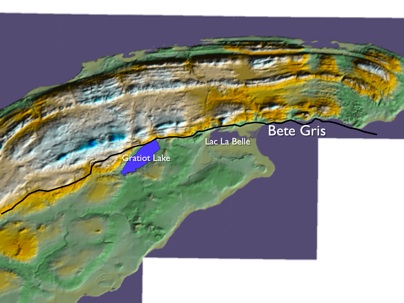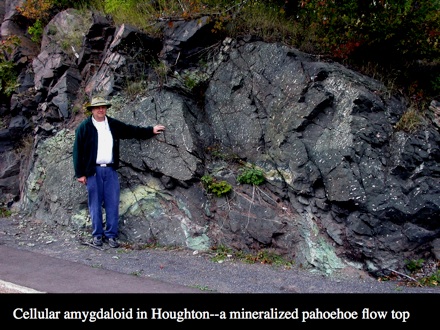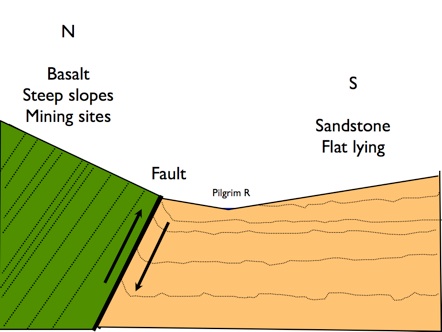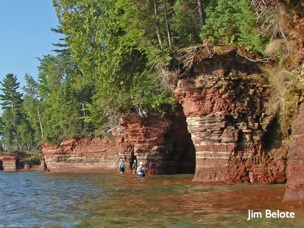Finding the Fault




Where is the fault?

Look for changes in the rock types and the attitude (strike and dip) of the rocks. This may sound easy, but it won’t be if outcrops are scarce. On the Keweenaw Peninsula there is mostly black lava and red sandstone and the contact marks the fault. This helps us know which side of the fault we are on in many cases (the lava is north and the sandstone south). But being able to find exactly where the faultline is is quite rare. There are many clues, however. Geological features cluster near the faultline--things like rivers, lakes, waterfalls! Often rivers parallel the fault on the side where more easily eroded rock is located.

Tilted Basalt
Flat lying Sandstone
The Keweenaw fault divides tilted lava rock basement (to the north) from flatlying redbeds (to the south). The topography expresses this difference by ridge and valley features where lava dominates, and topography is muted over the sandstone (see below).

